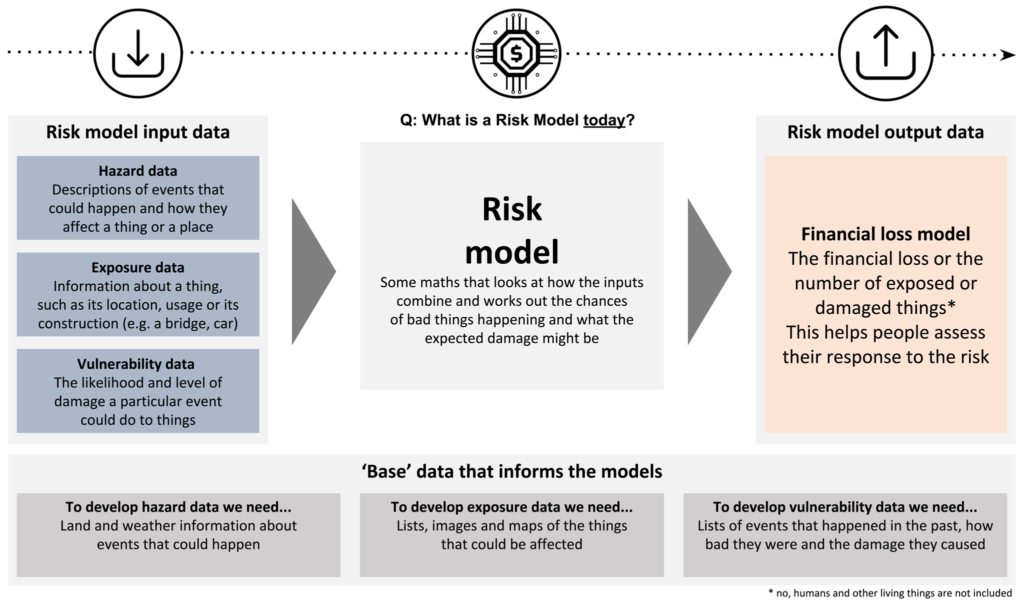Workshop outcomes
On Wednesday 10th April participants from insurance, risk modelling, disaster risk reduction, policy, investment and infrastructure held a workshop to unpack user stories and validate economic cases for this project. For example:
- Maria is Director of a National Disaster Management Office who is overseeing recovery and reconstruction efforts from a recent hurricane. She is trying to overcome the critical funding gap that opens up after immediate response operations are complete, but cannot progress without a better shared understanding of the risks faced by governments, businesses and individuals.
- Julio, an urban planner in a rapidly growing city, trying to minimise disaster risk and optimise investment in improving critical infrastructure maintenance as well as improving day-to-day performance.
- Simone, a catastrophe risk model developer who is finding the costs inherent in making country-specific models too high. She would like to make more use of satellite data from private sector providers to customise the models, but lacks the technical capacity to work with satellite data and the commercial scale to negotiate with private providers, as well as needing a network of local collaborators to help her validate data points with ground surveys.
- Aziz, an employee in a resource-strained environment ministry who needs a framework and consistent data to be able to publish key environmental datasets required by the SDGs and implement the Sendai Framework target G to ‘substantially increase the availability of and access to multi-hazard early warning systems’.
- Philip, who works for a large logistics firm which recently suffered major losses when wildfires destroyed a warehouse and disrupted transit networks. Whilst the physical losses were insured, they are unable to insure against the losses from business disruption. As a result, Philip developed a pilot project with a government research laboratory model how the firm’s facilities, networks and operations could be affected – but the laboratory are not interested in turning this into a commercial project for future use.
- XYZ™ are Asset Managers. They want to know the economic impacts of climate change on the companies they invest in – they want to compare companies, and know the impact of climate change on the physical locations/facilities and business operations.
- CCAT insurance is a company which provides insurance for households and businesses in a developing country where only 4% of the population take out insurance, they want to understand potential losses from a growing portfolio.
If you have a story to add, please contact gea@dgen.net
We created a diagram to help explain to newcomers how risk modelling works (click to comment).

Supporters
Our list of supporters continues to grow. Please help us connect with organisations who’d like to join the discussion privately, or publicly “Support the Icebreaker One discussion”.
Social media
Share/adapt these for your social media channels:
- Between 2000-2013, disasters cost the world $2.5tn. Help change the way we think about and finance resilience—join https://ib1.org #GPGeneva19
- Working on environmental risk modelling? New interoperability project—sign up now https://ib1.org#GPGeneva19
- Want to help create a marketplace for environmental data? Add your voice https://ib1.org #GPGeneva19
